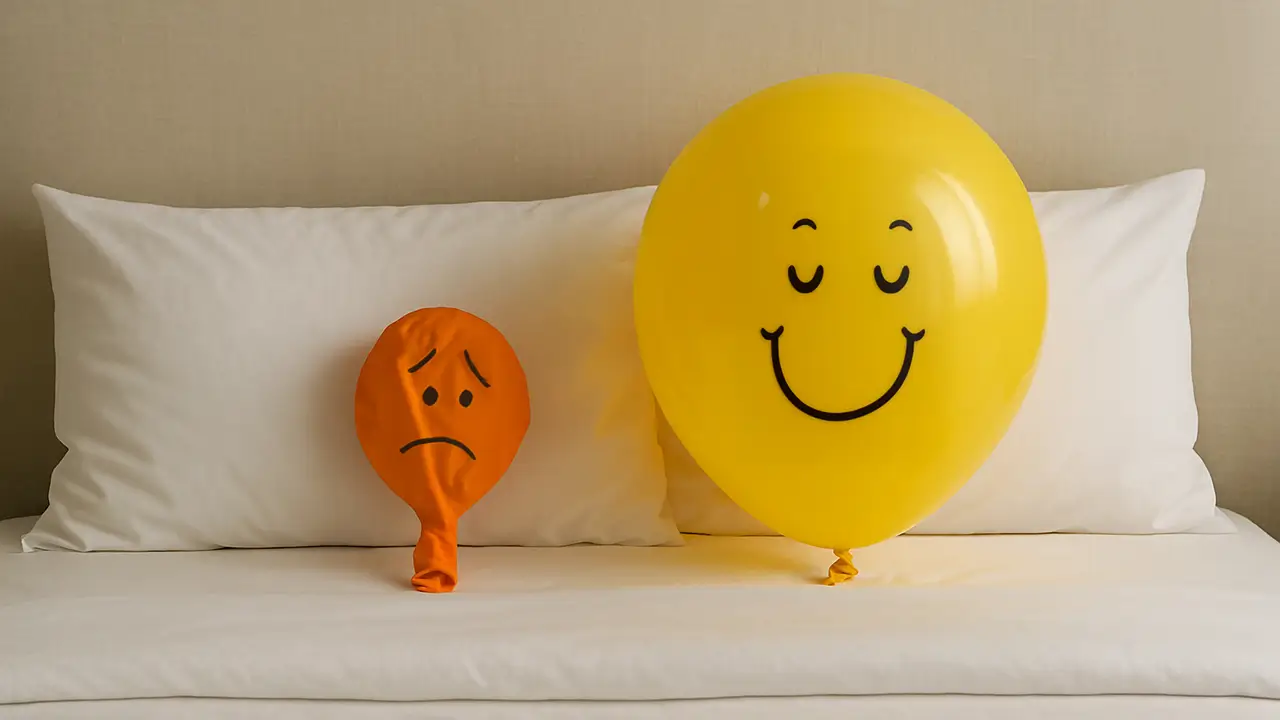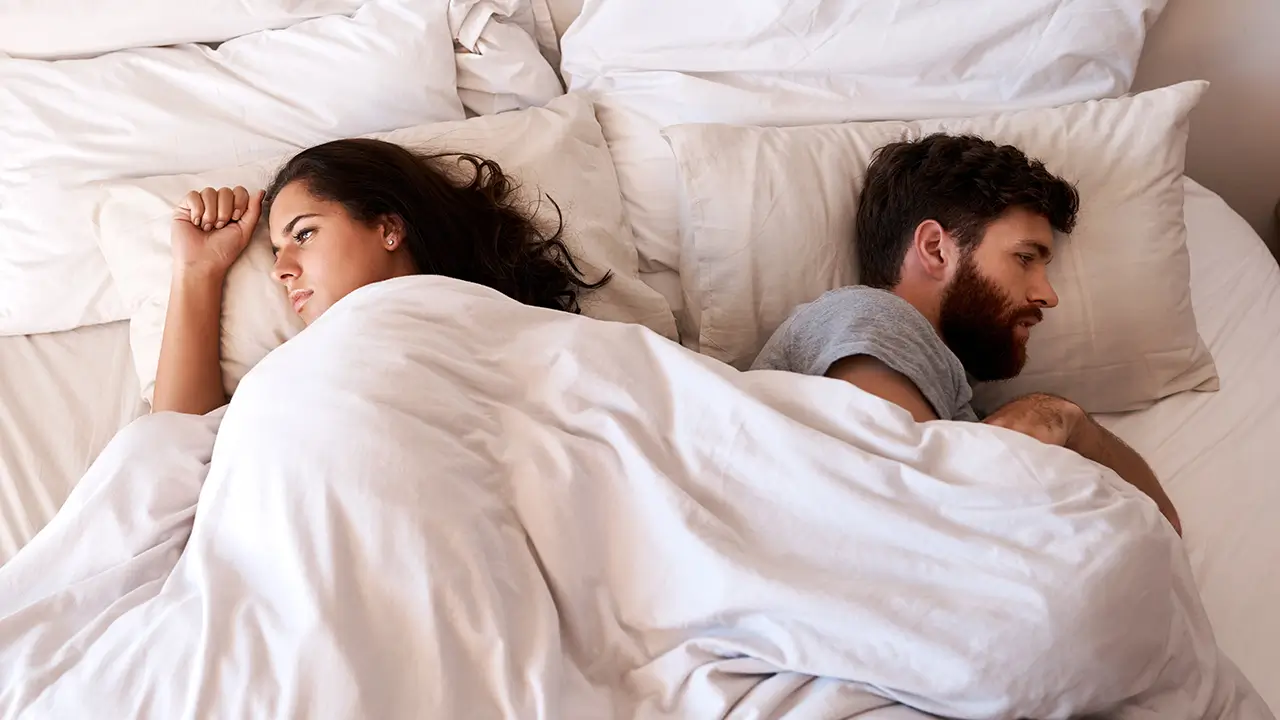
Sleep Isn’t a Nighttime Issue — It’s a Daytime One: Understanding Your Sleep Balloon
Think sleep starts when your head hits the pillow? It actually starts when your feet hit the floor. Meet the Sleep Balloon—your brain’s natural process for preparing sleep throughout the day, not just at bedtime.
We’ve been taught to think of sleep as something that begins at night—when the lights go off, the screens shut down, and we finally slide into bed. But for most of us, that’s far too late. The truth is, by the time your head hits the pillow, the success of your sleep has already been decided.
Sleep is a daytime issue®. And once you begin to see it that way, everything changes.
This is the foundation of the concept of the Sleep Balloon. It’s something I’ve taught to children, adults, teens, exhausted parents, and burned-out professionals. The Sleep Balloon represents the sleep pressure your brain builds throughout the day, which eventually leads to sleep. That pressure isn’t about how stressed or busy you are—it’s about how full your brain is from activity and sensory input.
Imagine a balloon slowly inflating throughout the day. With every movement, emotional connection, and exposure to light, sound, taste, or temperature change, you’re adding a puff of air. As the day goes on, your brain builds up adenosine—a natural compound that increases sleep pressure the longer you’re awake. It’s one of the key signals that helps your body wind down—if your balloon has been filled enough.
- A full balloon = high sleep pressure.
- An empty balloon = low sleep pressure.
Now here’s the key: when you finally fall asleep, your brain starts to use up all that pressure. It’s like slowly releasing the air from the balloon overnight. As you sleep, adenosine levels drop and the balloon deflates, gently returning to a baseline. That’s how your body resets, repairs, and recharges. But if the balloon was only half-inflated to begin with—if your day lacked sensory richness or variation—you’ll have a harder time falling and staying asleep.
So it’s not just about what you do at night. It’s about understanding the two systems that regulate sleep in our bodies: the circadian rhythm (your internal clock) and the sleep pressure system (the Sleep Balloon). When these two systems work in harmony, sleep becomes effortless. When they don’t, you may feel exhausted and wired at the same time.
This isn’t about adding more to your to-do list. It’s about being awake while you’re awake—noticing the day, using your senses, experiencing small moments that fill your balloon.
Things like feeling the warmth of your coffee mug in the morning, stepping outside into the sunlight or moving your desk by a window, hearing the natural rhythm of wind or birds, moving your body, or changing your environment—even in tiny ways—help fill your Sleep Balloon. When your body and brain have been gently stimulated in these ways throughout the day, sleep becomes the natural conclusion of your rhythm, not a nightly battle.
It’s important to understand that these sensory moments aren’t “extras.” They’re essential. Your brain doesn’t just want input. It craves variety—temperature changes, posture shifts, emotional experiences, light and dark, sound and silence. Every time you pause to stretch, sip something flavorful, open your sunroof, splash water on your face, or laugh with someone, you’re supporting the very system that allows you to sleep later on.
And here’s the beautiful part—while you're tending to your own balloon, your children are filling theirs in the exact same way. They, too, rely on a steady rhythm of sensory stimulation and regulation. The more we model and encourage these daily rhythms—especially without overstimulation—the more naturally our kids transition into their own restful nights.
When we finally arrive at evening, a gentle wind-down becomes the last opportunity to secure the fullness of the balloon. Just as we wouldn’t expect a child to fall asleep in a brightly lit, chaotic room while watching TV and juggling homework, we shouldn’t expect it of ourselves. Our brains respond to consistency, and they rely on sensory cues to know it’s time to shift into sleep mode.From the feel of your bedding to the lighting in your home, your environment is critical to a good night’s sleep as well. We respond to tactile softness, light shifts, and predictability. This is why investing in a restful bedroom space isn’t a luxury—it’s a biological support system.
And if a night goes poorly, if sleep is disrupted or stress has stolen your rest, there’s no shame in that. We don’t start over from zero. The Sleep Balloon can be refilled the next day. You can return to your senses, your light, your body, your rhythm!
So many of us live under the myth that we have to earn our sleep—that unless we’ve reached a certain level of exhaustion, we don’t deserve rest. But I’ve worked with hundreds of people who are beyond exhausted, and still can’t sleep.
The truth is: exhaustion is not the goal. Fullness is.
Sleep doesn’t begin in darkness. It begins in light.
It begins when you sip your coffee with both hands.
When you feel the grass under your feet or the sun on your face.
When your children giggle beside you, and you pause long enough to join in.
It begins when you stop numbing your day and start noticing it.
Sleep is built, moment by moment.
And the best part? You’ve been holding the balloon all along.
About our Team
Licensed clinical psychologist Dr. Kimberly Ann Lemke is an internationally recognised expert on the science of sleep - through her groundbreaking Drift® Method, she helps people prevent fatigue and burnout by focusing on daily habits. She is an award-winning entrepreneur and author.
Related Articles
It’s not you, it’s your mattress – how your bed can ruin your sex life
Sleep and exam success: Why rest is your secret weapon this revision season
Sales Enquiries
Mon-Sat: 9:30am - 5:30pm
Sunday: 10am - 4pm
Customer Service
Mon-Sat: 9:30am - 5:30pm
Sunday: 10am - 4pm












